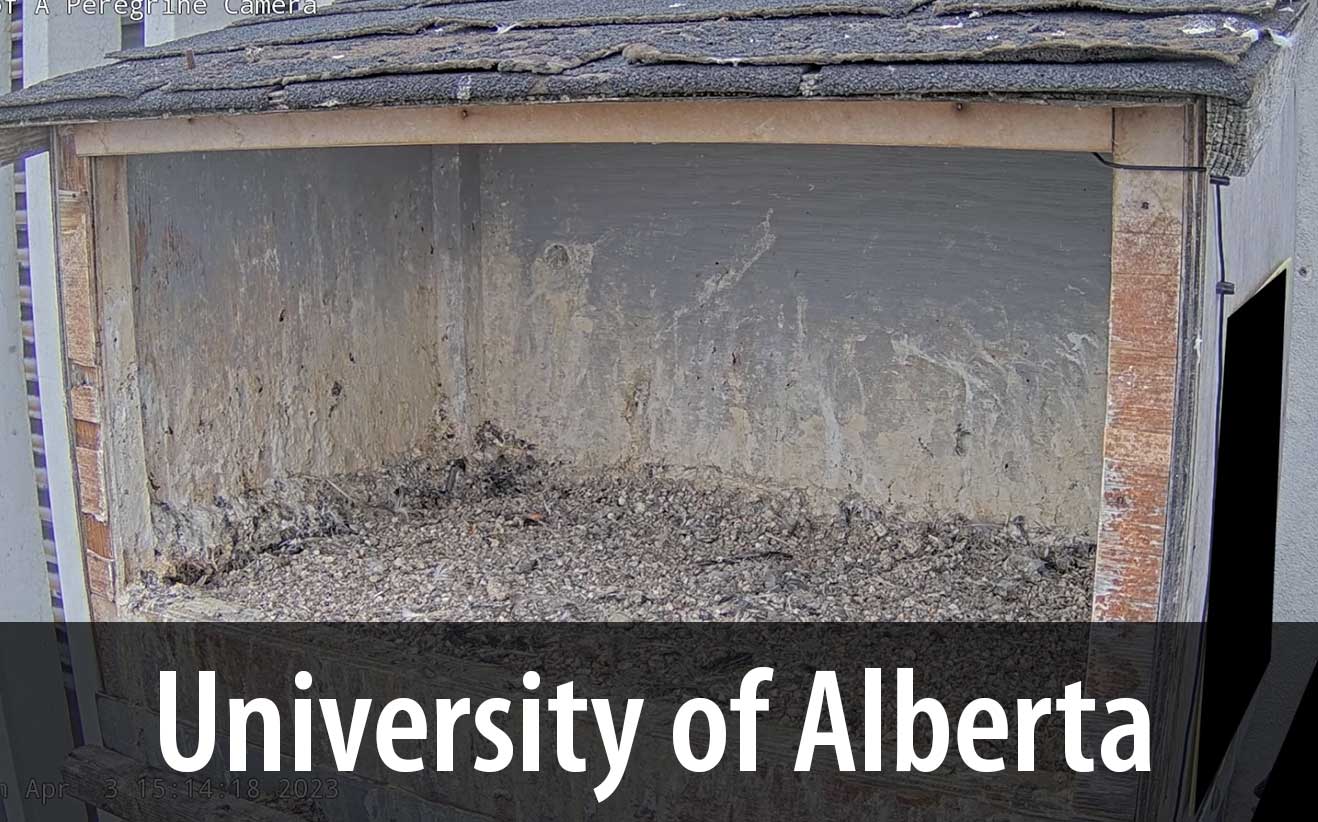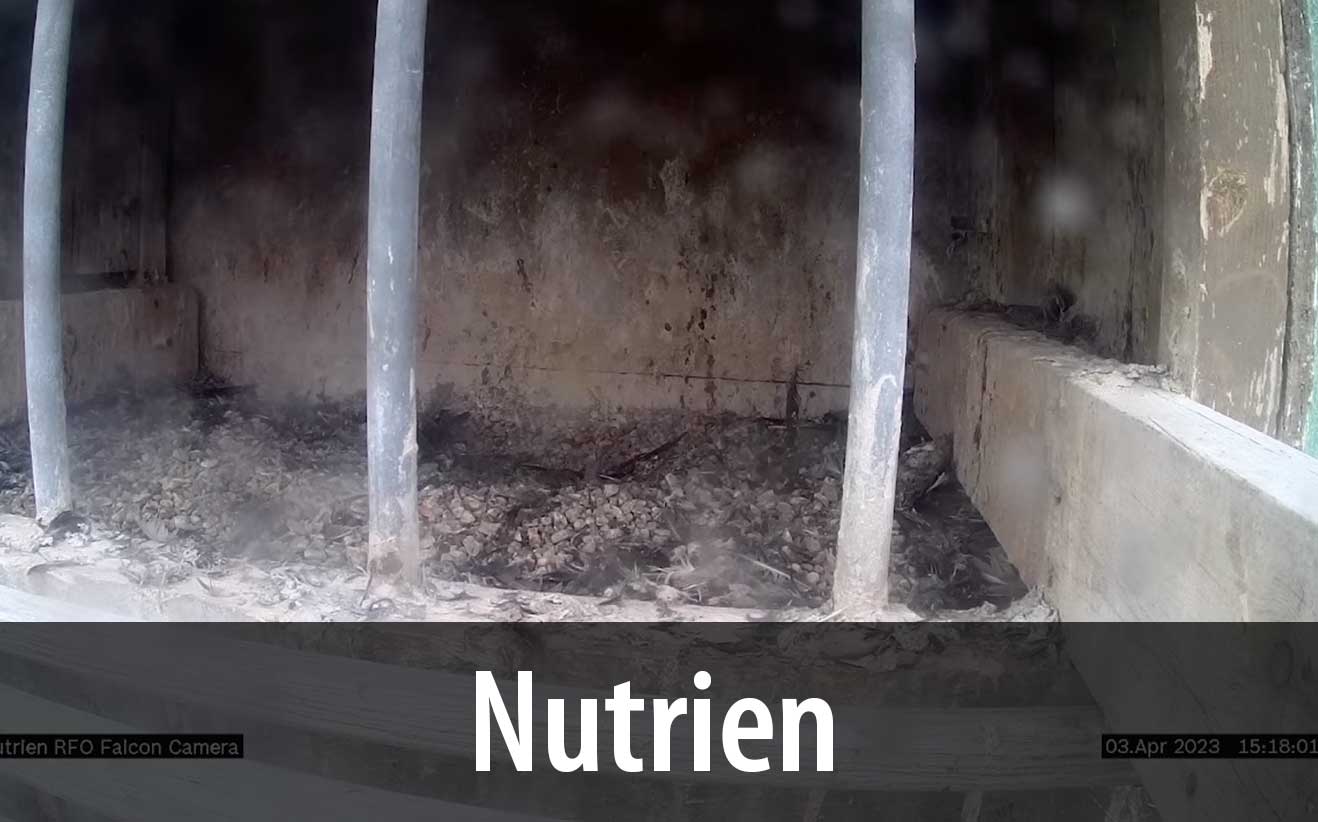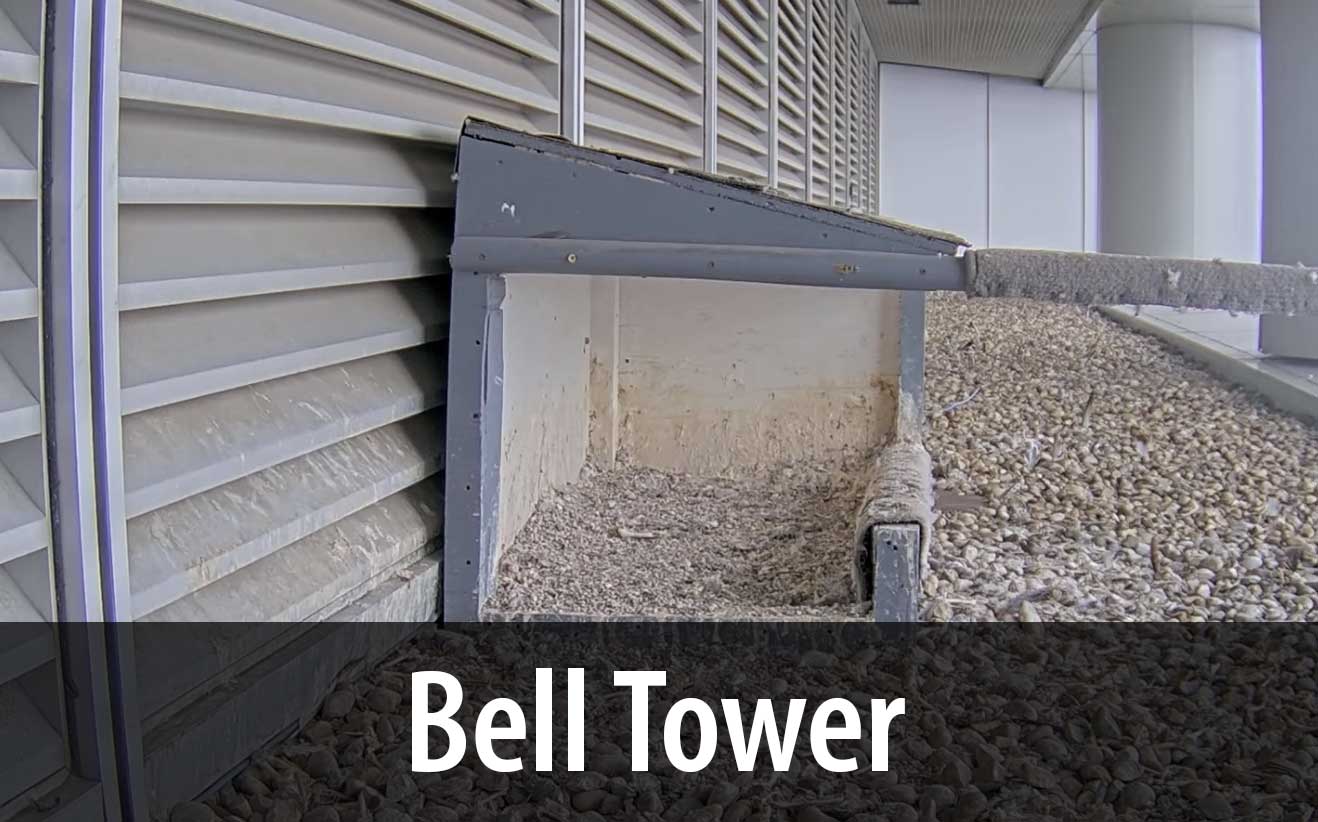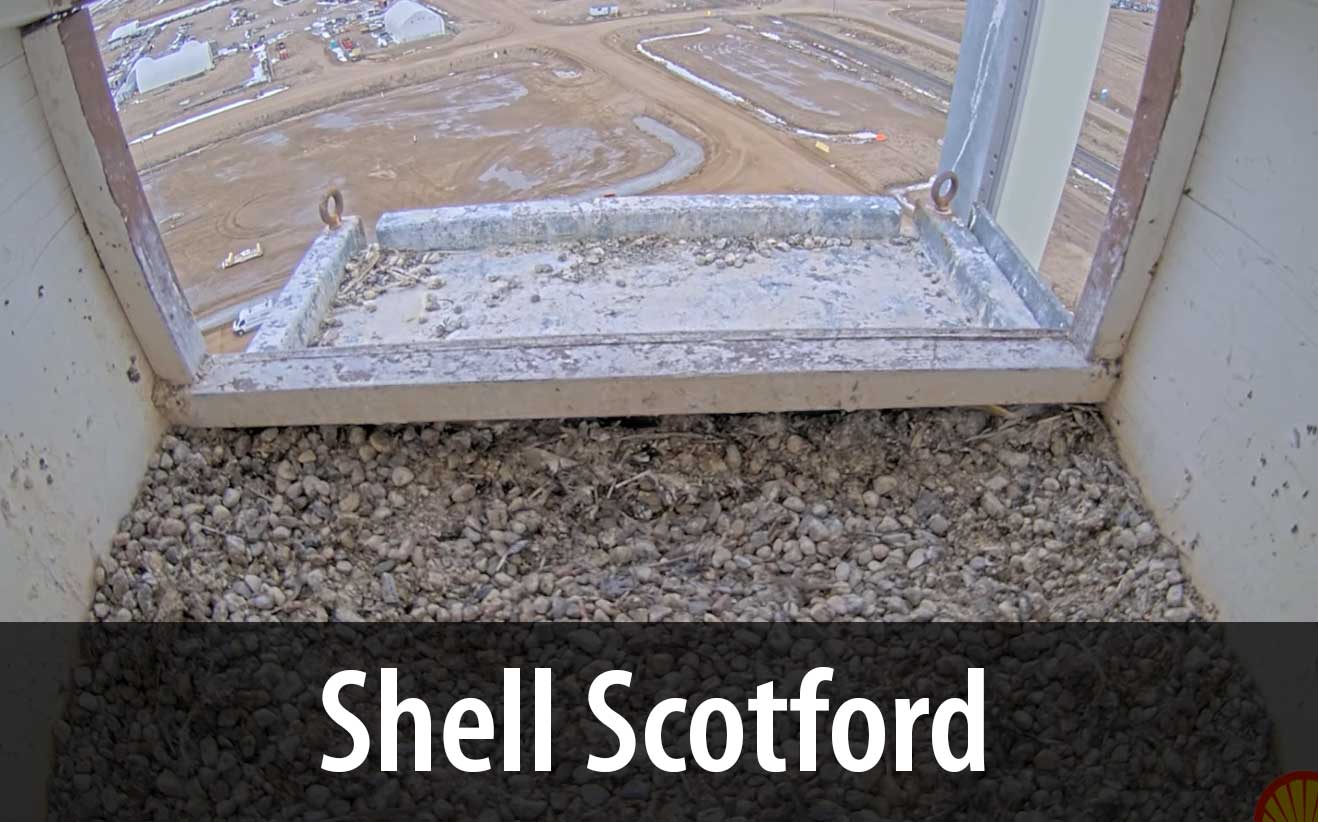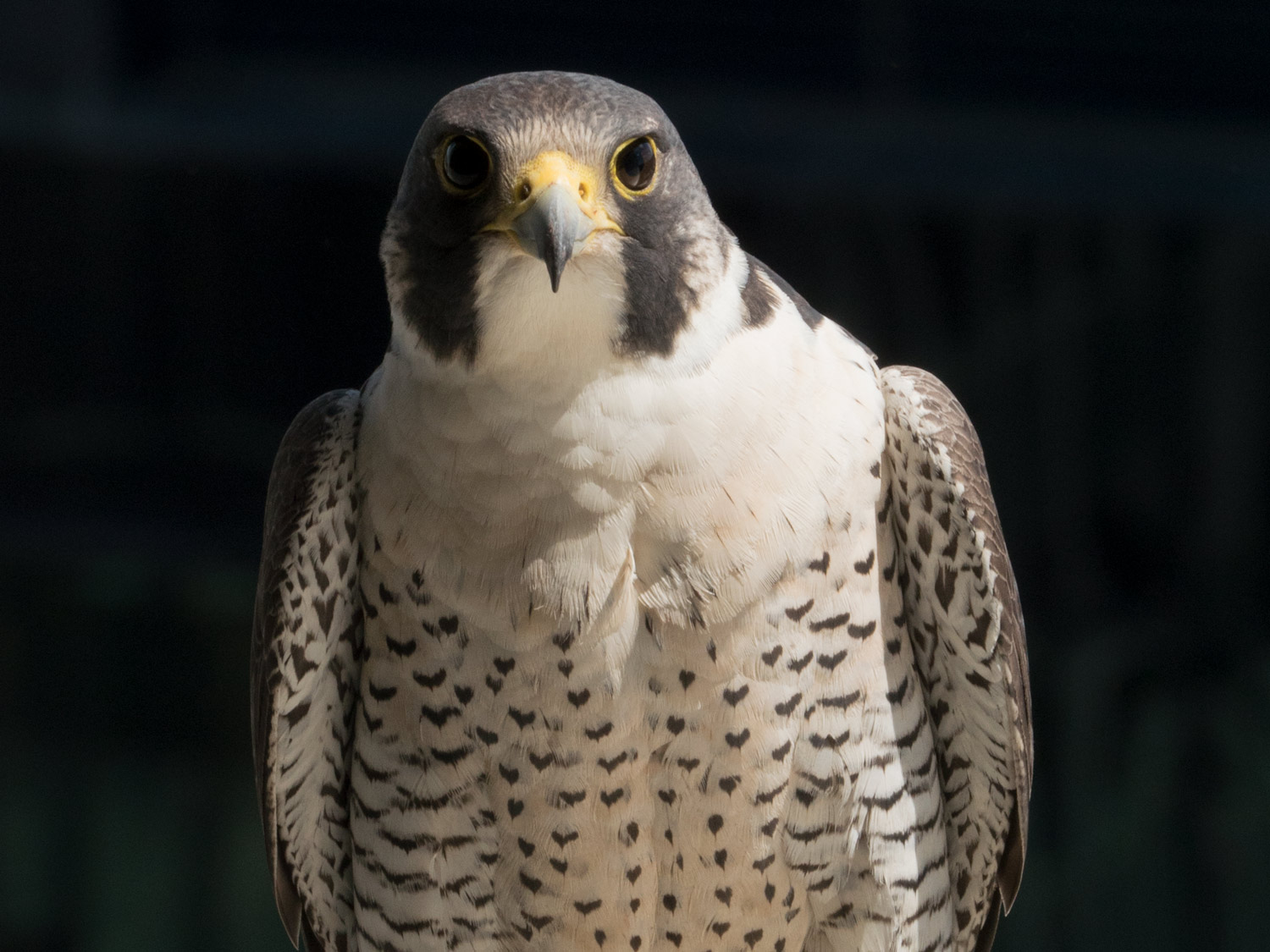2022 Peregrine Cameras
Frequently Asked Questions
The adult peregrine has left the eggs alone. Is that bad?
No, it is quite normal and actually beneficial for the family. It is remarkable how little the pair has to do with the first couple of eggs – usually just hanging out nearby, never incubating them. Peregrines do not start incubation with the first or second eggs, this is to ensure a relatively synchronous hatch of eggs. Therefore, they provide very little warmth to the first few eggs and only supply it when all or most of the eggs are laid. Incubation starts in earnest, usually, with the third egg.
The last-hatched in asynchronous broods often face a mechanical disadvantage (they are just too small and uncoordinated) in competing with their siblings for food and may starve in some nests, even though there is no shortage of food. About 45% of the last–hatched young in asynchronous broods of 4 chicks will die in this way.
Do male peregrine court the females? How?
During the peregrine egg laying period, the male peregrine will be feeding her and and engaging in courtship activities with her at this time, including the mutual nest ledge display that viewers will have seen a great deal. Off camera, the pair will be copulating up to four to five times per hour, with the most action happening about mid-day.
The peregrine is just laying there all day. Is she alright?
Yes she is doing great! You can see the females getting quite inactive when laying approaches. Each egg takes about 48 hours to produce.
How many eggs do peregrines lay?
The average clutch size for peregrine is 4, but both E4 and MO7 are among the few peregrines ever in Alberta to lay clutches of 5 and hatch them.
What happens if a chick dies?
The dead chicks are rarely eaten; sometimes they are removed from the nest and cached like any extra prey.
Do the males incubate the eggs too?
In general, adult male peregrine almost always do some incubating. However there is lots of varation in this behaviour. Some males seem fairly indifferent while other males are “egg crazy.” Some males are quite adept at carefully approaching and gently settling on the eggs, while others are total klutzes and just throw themselves on the eggs. Chase (at U of A) was a total bozo in his first season on eggs, booting them around and sometimes out of the scrape – his technique has improved as he gained more experience.
Why is the peregrine panting as it sits on the eggs?
The birds find the temperature too hot sometimes, just like humans. But birds don't sweat (water is too heavy to carry in flight) so they pant, just like a dog, to cool.
Where are the missing chicks?
Sometimes theyoung peregrinesare removedfrom nests,where there are chronically high levels of fledgling mortality each year (usually from collisions with buildings or vehicles), to increase their chances of survival. The young are taken to hack (release) boxes in a rural settingon the Pembina River.
To learn more about this initiative, visit www.ab-conservation.com/wildlife-cameras/peregrine/some-peregrine-chicks-are-missing/

